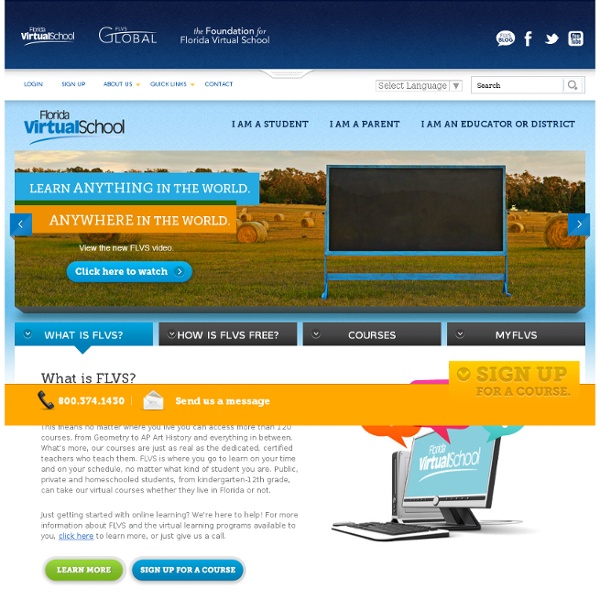California Connections Academy at Ripon
Students in Alameda, Amador, Calaveras, Contra Costa, Sacramento, San Joaquin, Santa Clara, and Stanislaus counties now have the opportunity to thrive at California Connections Academy @ Ripon (CalCAR), a tuition-free public online school. California Connections Academy gives students the flexibility to learn at home with a curriculum that meets rigorous state education standards. The mission of California Connections Academy at Ripon is to leverage 21st century education resources on behalf of students who need a more personalized approach to learning to maximize these students’ potential and meet the highest performance standards. A challenging curriculum developed by leading education experts. Instruction from state-certified teachers experienced in online instruction.
My Favorite WSQ
Please see the "revisited" version of this post, published in July of 2016, by clicking here.*Please read my WSQing page for more details, descriptions, and workflow* A "WSQ" (pronounced wisk) in my class is what we call "homework" in my flipped classroom. It stands for this: [read an update on the WSQ after using it for several weeks in my classroom here] W - Watch Students must watch the video for the assigned lesson and take notes in their SSS packets (this stands for "Student Success Sheets" and I have them for each unit/chapter) I have created for them.
Synchronous vs. Asynchronous Classes
Synchronous online classes are those that require students and instructors to be online at the same time. Lectures, discussions, and presentations occur at a specific hour. All students must be online at that specific hour in order to participate. Asynchronous classes are just the opposite. Instructors provide materials, lectures, tests, and assignments that can be accessed at any time. Students may be given a timeframe – usually a one week window – during which they need to connect at least once or twice.
Obama Administration Budget Makes Major Investment in Early Learning
Studies prove that children who have rich early learning experiences are better prepared to thrive in school. Yet the United States ranks 28th in the world for the enrollment of 4-year-olds in early learning, and 25th in public investment in preschool. Only 3 in 10 children attend a quality preschool program.
4 No-Cost Tools for Educators
FETC 2013 | Profile 4 No-Cost Tools for Educators Technology doesn't have to be expensive. Just ask John Kuglin, a long-time tech guru who shows educators how to tap into myriad free Web resources that can be used in and out of the classroom. By Bridget McCrea12/12/12
Thomas L. Friedman
History of the world twenty years from now, and they come to the chapter "Y2K to March 2004," what will they say was the most crucial development? The attacks on the World Trade Center on 9/11 and the Iraq war? Or the convergence of technology and events that allowed India, China, and so many other countries to become part of the global supply chain for services and manufacturing, creating an explosion of wealth in the middle classes of the world's two biggest nations, giving them a huge new stake in the success of globalization? And with this "flattening" of the globe, which requires us to run faster in order to stay in place, has the world gotten too small and too fast for human beings and their political systems to adjust in a stable manner? In this brilliant new book, the award-winning New York Times columnist Thomas Friedman demystifies the brave new world for readers, allowing them to make sense of the often bewildering global scene unfolding before their eyes. Reviews
- From the Principal's Office: 7 Must-Read Resources on Social Media for School Leaders
0 Comments April 14, 2013 By: J. Robinson Apr 14
How the Flipped Classroom Turned Me into a Better Student - Getting Smart
Kylie is a 12th Grade Student at Clintondale High School, in Clinton Township, Michigan My first two years of high school were a continuous struggle. I wasn’t very engaged during class, had a difficult time doing my homework, and was unable to get help from my parents because they didn’t know the material that I was being assigned.
Nine Elements
Nine Themes of Digital Citizenship Digital citizenship can be defined as the norms of appropriate, responsible behavior with regard to technology use. 1. Digital Access: full electronic participation in society. Technology users need to be aware that not everyone has the same opportunities when it comes to technology.
The Future of Education in Your Hands
Ericsson has just released a great new video entitled The Future of Learning as part of their Networked Societies series. The importance of this documentary stems from the fact that it emphasizes the use of technology as a way of promoting students learning and making their learning experience more engaged and streamlined. What a happy accident.Today I delivered a presentation on the 21st century literacy in the Mount Saint University in Halifax but when I got home and checked my feeds I found this video which, more or less , summarizes all my presentation. I felt sorry for had I learned about it yesterday I could have used it in my presentation , but it is ok I am sharing it with even a bigger audience and from every part of the world, You. Let me just take you back into the history of our educational system so that we can be in a better position to understand its present situation.



